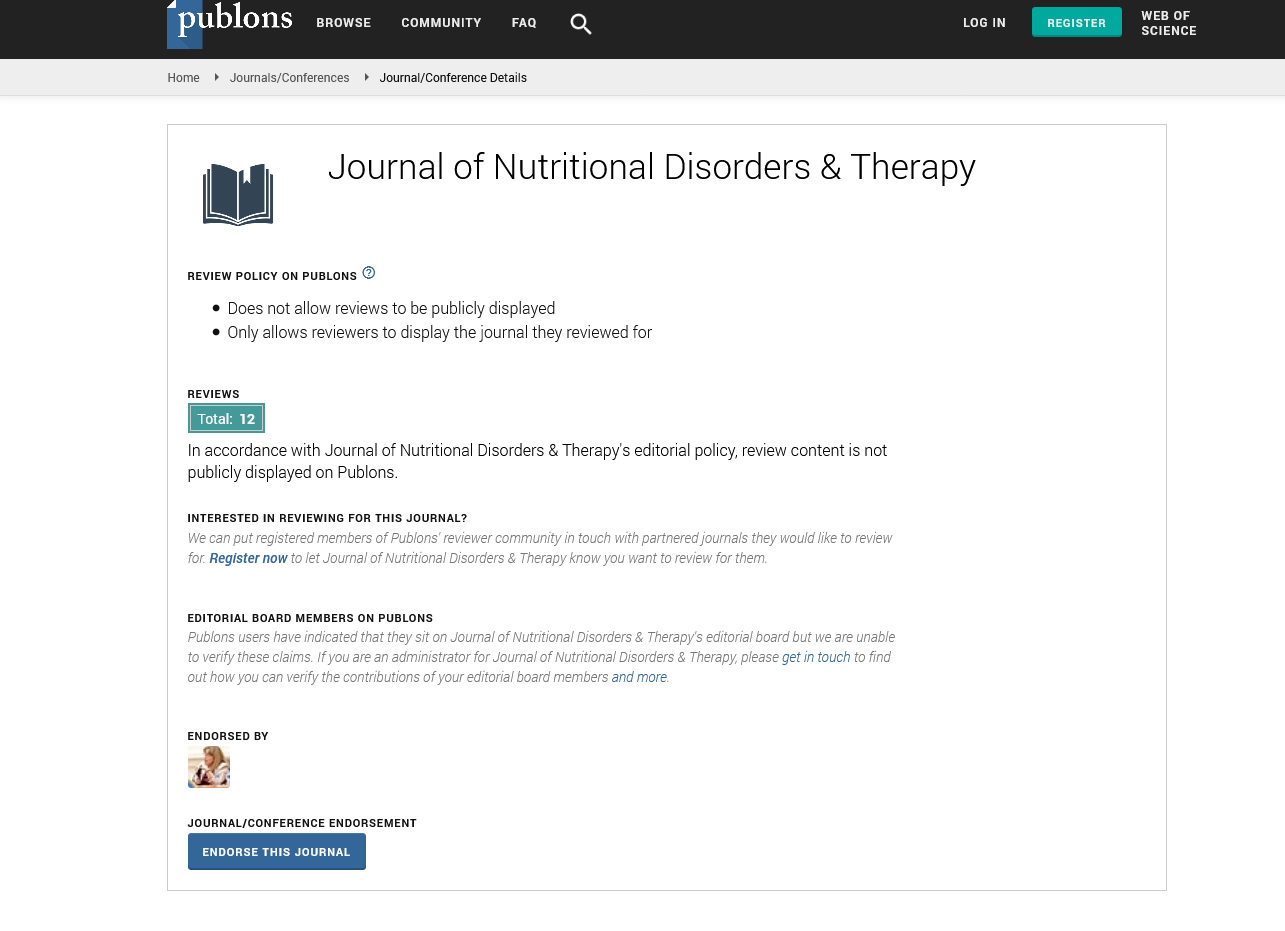Indexed In
- Open J Gate
- Genamics JournalSeek
- Academic Keys
- JournalTOCs
- Ulrich's Periodicals Directory
- RefSeek
- Hamdard University
- EBSCO A-Z
- OCLC- WorldCat
- Publons
- Geneva Foundation for Medical Education and Research
- Euro Pub
Useful Links
Share This Page
Journal Flyer

Open Access Journals
- Agri and Aquaculture
- Biochemistry
- Bioinformatics & Systems Biology
- Business & Management
- Chemistry
- Clinical Sciences
- Engineering
- Food & Nutrition
- General Science
- Genetics & Molecular Biology
- Immunology & Microbiology
- Medical Sciences
- Neuroscience & Psychology
- Nursing & Health Care
- Pharmaceutical Sciences
Opinion - (2025) Volume 15, Issue 1
Epidemiologic and Diagnostic Insights into Vitamin D Deficiency Rickets
Weldon Baker*Received: 25-Feb-2025, Manuscript No. JNDT-25-29120 ; Editor assigned: 27-Feb-2025, Pre QC No. JNDT-25-29120 (PQ); Reviewed: 13-Mar-2025, QC No. JNDT-25-29120 ; Revised: 20-Mar-2025, Manuscript No. JNDT-25-29120 (R); Published: 27-Mar-2025, DOI: 10.35248/2161-0509.25.15.324
Description
Rickets is characterized by defective mineralization of growth plate cartilage and bone due to disrupted calcium-phosphate metabolism. While rickets can stem from genetic disorders or chronic illness, nutritional vitamin D deficiency remains the most common cause worldwide. Vitamin D Deficiency Rickets (VDDR) often presents in children aged 6 months to 2 years, although older children may be affected.
Although fortification and supplementation programs have reduced prevalence in some countries, VDDR continues to emerge, particularly in populations with limited sun exposure or low dietary intake. Assessing incidence and characterizing affected children including age, gender, season, and comorbid conditions helps public health authorities identify at-risk groups and implement targeted prevention measures.
Epidemiology and incidence
Globally, the incidence and prevalence of vitamin D deficiency rickets vary widely across regions. In sub-Saharan Africa, the incidence ranges from 2 to 37 cases per 1,000 person-years, with notably higher rates observed among Salat children who wear full-body clothing and have limited sun exposure.
In South Asia including India, Pakistan, and Bangladesh rates between 5 and 20 cases per 10,000 live births have been reported in pediatric fracture registries. In the Middle East, a hospital-based study in Saudi Arabia documented an incidence of 13.5 cases per 10,000 children under the age of five, with peaks occurring after winter due to reduced sunlight exposure. In Northern Europe, prevalence rates as high as 2-5% have been found among infants, particularly those of South Asian descent, despite national fortification efforts.
Trends in high-income settings: Even in countries with definitive fortification policies and high-radiant UVB availability, case reports and small cohort studies indicate persistent incidence in exclusively breastfed infants without supplementation and in toddlers with poor dietary diversity.
Clinical presentation
Skeletal manifestations: Bowing of legs (genu varum or valgum), rickety rosary (costochondral swelling), wrist widening, and thickening of ankles, delayed motor milestones: Late initiation of sitting, crawling, and walking.
Muscular symptoms: Proximal muscle weakness leading to delayed developmental milestones and Hypotonia and increased propensity for falls and fractures
Prevention and public health measures
Preventing VDDR requires a combination of targeted supplementation, food fortification, public education, and routine screening. Supplementation programs for children from birth to two years of age are especially important for high-risk populations, such as those with darker skin, limited sun exposure, or exclusive breastfeeding without vitamin D support.
Mandatory fortification of staple foods like milk, edible oils, and flour can help address population-wide deficiencies.
Public health campaigns should focus on raising awareness about the importance of adequate sun exposure, a balanced diet rich in vitamin D, and the need for supplementation. In regions with documented cases, integrating screening for at-risk children during routine immunizations can facilitate early detection and prompt intervention.
Challenges in implementation
Several obstacles hinder the effective implementation of prevention programs for vitamin D deficiency rickets. Parental concerns about sun exposure, particularly due to fears of skin damage, and misconceptions about vitamin D toxicity can reduce acceptance of supplementation. In low-resource rural communities, inconsistent access to vitamin D supplements poses a significant barrier. Additionally, poor compliance is often linked to a lack of awareness and inadequate follow-up within healthcare systems. Cultural practices, especially those involving clothing that limits skin exposure to sunlight, disproportionately affect girls and further reduce UVB synthesis.
Vitamin D deficiency rickets continues to affect young children in both low and high-income countries. Identifying incidence patterns and risk profiles enables clinicians and public health workers to implement prevention and treatment strategies. Combining vitamin D with calcium, physiological rehabilitation and public health promotion offers an effective pathway to reversing and preventing this form of malnutrition. Early detection and treatment are key to ensuring normal growth, bone strength, and long-term health.
Citation: Baker W (2025). Epidemiologic and Diagnostic Insights into Vitamin D Deficiency Rickets. J Nutr Disord Ther. 15:324.
Copyright: © 2025 Baker W. This is an open-access article distributed under the terms of the Creative Commons Attribution License, which permits unrestricted use, distribution, and reproduction in any medium, provided the original author and source are credited.

